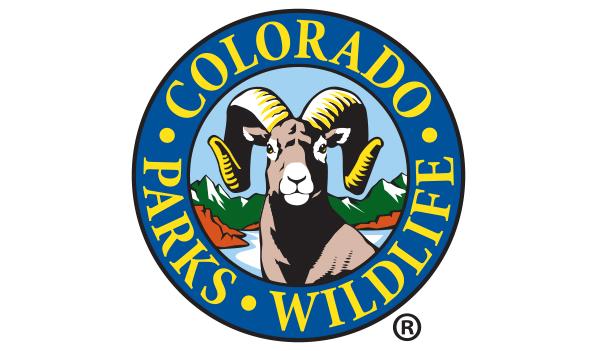CPW meets with county commissioners as part of gray wolf release planning efforts for 2024-25

 Rachael Gonzales
Rachael GonzalesNorthwest Region Public Information Officer
970-773-8587 / [email protected]
Twitter: @CPW_NW CPW meets with county commissioners as part of gray wolf release planning efforts for 2024-25

DENVER — Colorado Parks and Wildlife has begun planning for the next round of gray wolf releases. On Friday, Nov. 8, CPW Director Jeff Davis, Northwest Regional Manager Travis Black, Area Wildlife Managers and Wolf Program staff met with county commissioners and staff from counties where CPW is considering releasing wolves during the 2024-25 capture and release season. County representatives were from Rio Blanco County, Garfield County, Eagle County and Pitkin County.
"As we move forward with the Colorado Wolf Restoration and Management Plan, which is mandated by law, we are committed to having conversations with local elected officials and communities near possible release areas,” said CPW Director Jeff Davis.
During the half-day meeting in Rifle, CPW staff shared the current status of wolves in Colorado, initial planning and approaches to the upcoming capture and release efforts, and an overview of criteria needed for potential release locations. Topics also included a brief recap of non-lethal mitigation presentations currently underway with local agricultural communities and other efforts underway within the wolf management program to minimize wolf-livestock conflict.
At the Colorado Parks and Wildlife Commission meeting in August, CPW announced it would once again be releasing wolves in the northern release zone. When identifying potential release locations, local area wildlife managers and biologists, and wolf program biologists identified state-owned lands that are within the landscape context that will support wolves, keeping in mind movement immediately after the release. This included looking at the availability of natural prey sources during that time of year and appropriate habitat. In addition, staff is also considering access, safety for staff and animals, potential impacts due to weather conditions, and equipment needed.
“State statute has provided constraints on where wolves can be released. Within those constraints, the Wolf Restoration and Management Plan identifies additional consideration as to where restoration can occur,” stated Travis Black, Northwest Region Manager. “We feel it is important to provide insight into our planning process, highlighting how we select potential release sites that align with these established boundaries.”
Final release site decisions will not be made until the operation is underway. Variables, including weather, animal welfare, staff safety, and many other day-of-operation logistics and possible scenarios, are taken into consideration when making the final decisions for release.
During the December 2023 wolf releases, (CPW) observed that several wolves made significant movements in the months following their release, which was to be expected. With this in mind, CPW staff are looking at social considerations, human and livestock, in the areas surrounding the release sites, where potential movement could occur. This included analyzing human presence, recreational activities, and established communities, and assessing the potential for conflicts with livestock.
Wrapping up the meeting, county commissioners had an opportunity to ask questions and share feedback they are hearing from their local communities and producers.
"We recognize that this is a challenging situation and all involved are listening to their constituents. We wanted to create an opportunity for officials to have their questions answered and to understand how we can assist our local partners in informing their communities," said Davis.
In addition to this meeting, CPW has been collaborating with the Colorado Department of Agriculture (CDA) to host Conflict Reduction Training sessions in several counties within the Northwest Region. During these training sessions, producers receive valuable information on various topics, including range riding, carcass management, livestock protection dogs and investigations into wolf depredation. This training aims to prepare agricultural producers ahead of the calving and lambing season, which typically occurs in early spring each year.
These meetings took place in:
- Moffat County
- Routt County
- Rio Blanco County
- Garfield CountyJackson
- Routt County
Upcoming training sessions are scheduled for Eagle and Gunnison counties in December.
“As restoration efforts continue, CPW is focused on supporting an environment where livestock producers, communities, state agencies and partners work both individually and together in order to reduce the likelihood of wolf-livestock conflict. Effective and innovative solutions will result from this local expertise and extended, respectful collaboration. These relationships are critical to the success of wolf restoration in Colorado while at the same time supporting agricultural and rural communities and the vital role they play in Colorado’s economy, heritage and conservation efforts,” said Davis.
The meeting on Nov. 8 in Rifle marks the beginning of the collaboration efforts as we enter the next phase of gray wolf introductions and continues the discussions that have been taking place since January 2024. Colorado Parks and Wildlife remains committed to engaging further with county officials, local producers, and other stakeholders in areas where wolves currently reside and in locations where wolves may be released in the future.Colorado Parks and Wildlife (CPW) is an enterprise agency, relying primarily on license sales, state parks fees and registration fees to support its operations, including: 43 state parks and more than 350 wildlife areas covering approximately 900,000 acres, management of fishing and hunting, wildlife watching, camping, motorized and non-motorized trails, boating and outdoor education. CPW's work contributes approximately $6 billion in total economic impact annually throughout Colorado.
DISCLAIMER: The Colorado Parks and Wildlife (CPW) website maintains press releases containing historical information that may no longer be accurate. Press releases are dated, which should be noted to determine whether the information provided is current. Please review our current regulations and brochures for up-to-date information.